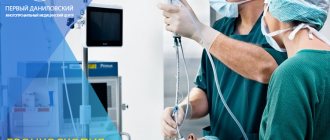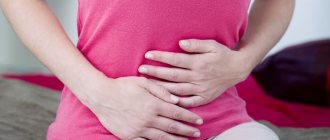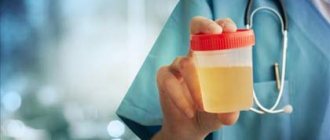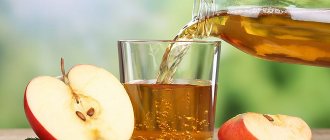An enema is an unpleasant and rather intimate procedure. However, there are few people in the world who have not had to go through it. And when the need arises for performing an enema, it is important to be able to do it correctly. Otherwise, it will turn out to be useless, and sometimes even harmful.
There are mainly two types of enemas:
- Medicinal. When setting them, microenemas with a volume of up to 100 ml are used. With their help, a solution of drugs is introduced into the rectum and sigmoid colon, which must be absorbed.
- Cleansing. The liquid is introduced in a volume of 1.5-2 liters using an Esmarch mug.
There are quite a few indications for using an enema. These are diseases such as constipation, intoxication, proctitis, intestinal dysbiosis, prostatitis, diarrhea, dyspepsia and so on. Each disease has its own method of administering an enema. In addition, when prescribing this procedure, the doctor takes into account the condition of each individual patient. So, for people suffering from hypertension, edema, intracranial pressure, the doctor prescribes a so-called hypertensive enema - with a hypertonic solution of table salt or magnesium sulfate.
Types of enemas
Cleansing enema Cleansing enemas are used to liquefy and remove gases and contents of the lower parts of the colon. The injected liquid has a mild mechanical, chemical and thermal effect on the large intestine, which enhances its peristalsis, dilutes stool and promotes its rapid and easy excretion. Siphon enema Siphon enema is used for repeated intestinal lavage in cases where a cleansing enema does not bring the desired result. The principle of the siphon enema is based on the law of communicating vessels, causing rhythmic contraction of the intestinal walls. Medicinal enema A medicinal enema is used to inject a small amount of medication into the patient's rectum. As a rule, these are sedatives, sleeping pills, and anti-inflammatory drugs. However, recently such enemas are used less and less, since most medications are now available in the form of suppositories. In the case of using a medicinal enema, a preliminary cleansing enema is required. Nutrient enema Nutrient enema is used when it is necessary to introduce nutrients through the rectum. In the lower part of the large intestine, proteins, various vitamins, amino acids, glucose, and aqueous solutions are absorbed, and therefore this method is also used in artificial nutrition of patients. Diagnostic enema This type of enemas is used to confirm or refute the presence of certain diseases in a patient. Diagnostic enemas include contrast enemas, which are done for x-ray examination of the large intestine. In this case, radiopaque contrast agents are injected into the large intestine.
Preparing documents for examination
In our clinic, medical documentation is filled out, and based on the results of studying MRI images of the pelvis, a specialist issues an official conclusion. MRI of the pelvis is performed based on a referral issued by the attending physician. You can get a referral from our doctor, and an MRI of the small pelvic cavity is done on the basis of documents issued by specialists from other institutions. You must remember to take the documents with you on the day when the MRI of the pelvic organs will be performed.
As directed by the diagnostician, you should bring the results of previously performed examinations: CT scan of the pelvis, ultrasound, radiographs. Also extracts from an outpatient card or medical history.
Contraindications to the use of enema
Enemas should not be used in the presence of acute inflammatory processes in the colon and anus, rectal prolapse, bleeding hemorrhoids, gastrointestinal bleeding and disintegrating tumors of the colon. Severe cardiac, hepatic, renal failure and some acute diseases of the abdominal cavity are also contraindications to the use of enemas. Particular care must be taken when using enemas during pregnancy. An enema during this period can cause uterine contractions and miscarriage. This procedure can only be attempted with the permission of a doctor and in the most exceptional cases. Adequate physical activity and a diet rich in plant foods are a much safer way to improve bowel movements during pregnancy.
Preparation for MRI of the pelvis in women
In gynecology, magnetic resonance imaging is performed to diagnose diseases of the ovaries, fallopian tubes, and uterus in women. MRI of the pelvis is not performed during menstruation. The optimal time for studying the pelvis in women is days 6-12 of the menstrual cycle. Even before prescribing the procedure, the doctor finds out how soon the onset of menstruation is expected and selects a suitable day.
In addition to a general diet, women preparing for an MRI examination of the pelvic space are advised to take activated charcoal or Espumisan. The first time the drug is taken in the evening before the procedure, the second time an hour before placement in the resonating chamber.
It is not advisable to perform MRI of the pelvic organs on an empty stomach. The best option would be to eat a small, light meal 2-3 hours before the pelvic MRI. The digestive system should remain calm, so enemas and laxatives are avoided. The presence of a small amount of feces in the intestines during examination of the pelvic organs does not harm the quality of images in women.
Half an hour before the examination of the pelvic organs, you must take an antispasmodic drug. For example, the drug “no-shpa”, widely used as an antispasmodic in the abdominal cavity. Before the MRI of the female pelvis begins, the bladder is emptied.
When the bladder is examined on an MRI of the pelvis, on the contrary, they strive to achieve partial filling. An hour before MRI of the female womb, the patient drinks 0.5-1 liters of clean water and subsequently does not urinate.
Enema at home
An enema is an unpleasant procedure, and therefore it is best to entrust its implementation to experienced medical professionals who know how to reduce the inevitable discomfort. If travel to a medical facility is not possible due to age or existing medical conditions, or if just the thought of an enema in a public place causes anxiety, it is quite possible to do an enema at home. However, it is worth noting that carrying out the procedure independently is accompanied by some inconveniences - it is difficult to find a comfortable position both for infusing liquid and for holding it, it is difficult to regulate the flow of liquid and it is almost impossible to change the height of the container if necessary. The most effective way is to call a nurse at home who knows how to properly administer an enema. A qualified nurse will ensure that the procedure is not done forcefully, which often happens when performed independently, and will quickly reduce the fluid pressure if the patient experiences the slightest pain. In addition, an experienced nurse will create a favorable psychological environment, relieving the patient of feelings of embarrassment. Do not forget that an enema is a medical procedure, which can only be performed as prescribed by a doctor. Abuse of enemas leads to disruption of the intestinal microflora and further disruption of its daily function.
< back to list
General diet for people of any gender
The day before the MRI, dietary restrictions begin. You should not eat solid food for 24 hours. You should also avoid foods that increase the formation of gases in the intestinal lumen. These include beans (peas, beans), raw vegetables, sweet fruits, dairy products, brown bread and baked goods, and sweets. Perhaps the patient has noted in the past increased individual gas formation when consuming other foods, which should also be excluded from the daily diet.
Allowed to eat:
- lean beef, fish and poultry, also broths;
- biscuits (unsweetened) cookies;
- lightly toasted white bread;
- buckwheat or wheat porridge.
Not only those rich in starch (potatoes), but also those containing large amounts of coarse fiber are excluded from vegetables.
Including:
- cabbage;
- turnip;
- radish;
- radish;
- carrot;
- parsley.
The same goes for leafy greens (lettuce, spinach, sorrel). It is undesirable to eat mushrooms that contain large amounts of chitin. Like fiber (cellulose), chitin is not digested, leading to excessive feces formation and increased fermentation processes.
Oatmeal and pearl barley (or barley porridge) are undesirable. It is necessary to exclude drinks saturated with carbon dioxide (beer, kvass, lemonade, carbonated water). The appearance of small amounts of carbon dioxide nearby on an MRI can degrade image quality.
Contrasting
If contrast administration is contemplated, it is necessary to determine whether hypersensitivity to iodine-containing substances has ever occurred. Usually the contrast contains iodine, in addition, there are allergies to other components of the contrast agent.
The contrasted organs of the small pelvic space are better visible, but you have to prepare for the procedure with caution, and it takes 15-20 minutes more time.
In general, after 30-60 minutes the procedure is usually completed. Rate this article: (1 rated 5 out of 5)
Scheme for colon cleansing with enemas
There is a developed scheme for performing cleansing enemas before starting any treatment or in parallel with it. Cleansing with enemas according to the scheme cleanses the body of toxins. Before starting treatment for any chronic skin disease, a cleansing enema is necessary.
Colon cleansing with enemas is carried out according to the following scheme
| A week | Frequency of enemas |
| 1 | Weekly |
| 2 | In one day |
| 3 | After two days |
| 4 and all subsequent ones | Once a week |
How much water is required for an enema?
For a cleansing enema, an adult needs from one to one and a half liters of warm water. Recommended water temperature is from 25-35°C.
To stimulate contractions of the colon during atonic constipation, you can use water at a lower temperature - from 12 to 20 °C.
If it is necessary to relax the smooth muscles of the intestines during spastic constipation, you need to use water at a temperature of 37 to 42°C.
To enhance the cleansing effect of the procedure, you can add 2-3 tablespoons of glycerin or any vegetable oil to the enema water. You can dissolve one tablespoon of baby soap shavings in water.
Psychological nuances
In some patients, preparing for an MRI requires explanations of how the examination is done in order to relieve fear of an unfamiliar environment and the operation of a device designed to create a magnetic field. Persons suffering from claustrophobia (fear of closed spaces) need the most careful preparation.
In some cases, with severe nervous or mental disorders, MRI of the pelvic organs is impossible, since the patient does not maintain a fixed body position. Then the examination of the pelvic organs is performed under anesthesia. In the same way, MRI images of the pelvis are obtained in young children.
Before administering anesthesia, the anesthesiologist finds out how sensitive the patient is to premedication drugs, if any have been administered in the past.
Esmarch's irrigator
Esmarch's irrigator.
Photo: Social networks A cleansing enema is given using a special rubber or glass Esmarch mug. Esmarch's mug is a special tank with a hole with a volume of one to two liters.
A special rubber tube about one and a half meters long is attached to the mug. At the end of the tube there is a special rubber or plastic tip. There is also a special tap at the end of the tube, with which you can regulate the flow of water from the mug into the rectum.
Caring for a patient in case of violation of the need for physiological functions
Functions of the digestive organs
Digestion
- a set of physical, chemical and physiological processes that ensure the processing and transformation of food products into simple chemical compounds that can be absorbed by the cells of the body. These processes occur in a certain sequence in all parts of the digestive tract: the oral cavity, pharynx, esophagus, stomach, small and large intestine with the participation of the liver and gall bladder, and pancreas.
Main functions of the digestive organs:
- Motor, or motor
, is carried out by the muscles of the digestive apparatus and consists of chewing, swallowing, mixing and moving food through the digestive tract and removing undigested residues from the body. Motor skills also include the movements of villi and microvilli. - Secretory
- associated with the production of digestive juices by glandular cells: saliva, gastric, pancreatic, intestinal juices and bile. - Absorption
- carried out by the mucous membrane of the gastrointestinal tract. From the organ cavity, the breakdown products of proteins, fats, carbohydrates (amino acids, glycerol and fatty acids, monosaccharides), water, salts, and medicinal substances enter the blood or lymph.
The digestive system of a healthy person is characterized by:
- absence of pain along the digestive tract;
- absence of digestive disorders;
- no change in skin color or coating on the tongue;
- regular, painless bowel movement;
- stool is well-formed, without impurities and parasites.
Dyspeptic disorders (disorders of the digestive process)
These include:
- Belching
is a sudden entry into the oral cavity of air, gas from the esophagus and stomach. If stomach contents are also ingested, they speak of regurgitation. Belching can be caused by swallowing air (in infants) or drinking carbonated drinks. Frequent or constant belching (regurgitation) indicates damage to the esophagus or stomach - kinking or stenosis (narrowing), disturbances of peristalsis, observed with a hiatal hernia. - Heartburn
– a burning sensation behind the sternum along the esophagus due to the reflux of acidic stomach contents into the esophagus. The cause of heartburn is a decrease in the tone of the sphincter between the esophagus and the stomach, inflammatory processes in the upper gastrointestinal tract. Risk factors for heartburn: excess weight, smoking, pregnancy, taking certain medications, wearing tight clothing. Foods that cause heartburn: fatty meats, citrus fruits, chocolate, alcohol, tomatoes, sweet carbonated drinks, coffee.Note:
a retrosternal burning sensation is characteristic of angina pectoris, and sometimes occurs with increased blood pressure.
- Flatulence
is an excessive accumulation of gases in the intestines. The cause may be: abuse of gas-forming products, diseases of the pancreas, fermentopathy, intestinal dysbiosis, intestinal obstruction. - Appetite disturbance:
- increased appetite (bulemia)
- observed in the recovery period, with diabetes mellitus, during pregnancy, and with mental disorders; - perverted appetite
- the desire to eat chalk, coal and other substances - is observed in pregnant women, with gastritis with low acidity.
decreased appetite or complete lack of appetite (anorexia)
- with chronic gastritis, cancer (stomach cancer), fever.
Note:
if you have mental illness, or because of fear of pain that gets worse after eating, you may
refuse to eat.
- an unpleasant sensation in the epigastric region, often preceding vomiting. It can occur with errors in food, poisoning, diseases of the digestive system, diseases of the central nervous system, during pregnancy, motion sickness, etc.
Note:
in some diseases accompanied by weight loss (cancer), nausea can be constant and threaten the patient’s life.
- a complex reflex act in which the contents of the stomach are involuntarily thrown out through the mouth (less often through the nose). Vomiting occurs due to increased peristalsis of the lower parts of the stomach, relaxation of the upper parts of the stomach and esophagus while simultaneously contracting the muscles of the diaphragm and abdominal wall. Depending on the mechanisms of vomiting, vomiting of central origin, toxic and visceral vomiting are distinguished.
- Vomiting of central origin
occurs without previous nausea, is not associated with food intake, is not associated with abdominal pain, but with a headache, is scanty and does not bring significant relief. Its causes: increased intracranial pressure, hypertensive crisis.
Toxic vomiting
is observed in various intoxications and metabolic disorders: alcohol poisoning, carbon monoxide poisoning, renal failure, toxicosis of pregnancy, diabetic ketoacidosis.
leads to relief of the condition. May be a symptom of gastritis, peptic ulcer, stomach cancer, appendicitis, cholelithiasis, intestinal obstruction and other diseases
Notes:
- vomiting in the morning, mucus occurs due to inflammation of the gastric mucosa;
- vomiting of bile is associated with the reflux of the contents of the duodenum into the stomach (with sphincter insufficiency);
- vomiting “coffee grounds” is a sign of bleeding from the stomach and requires urgent measures.











